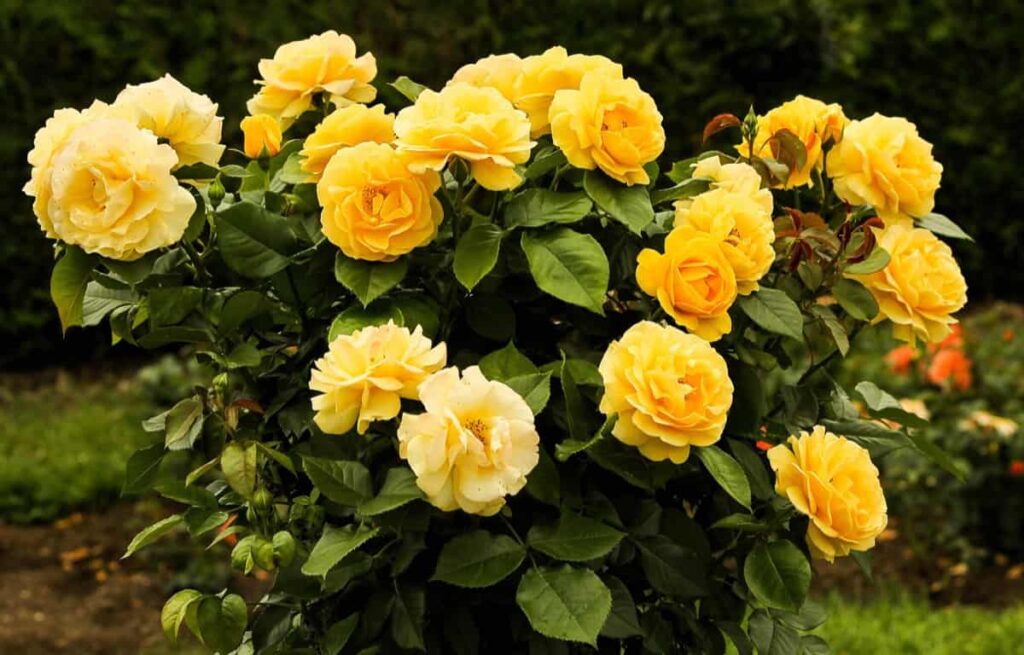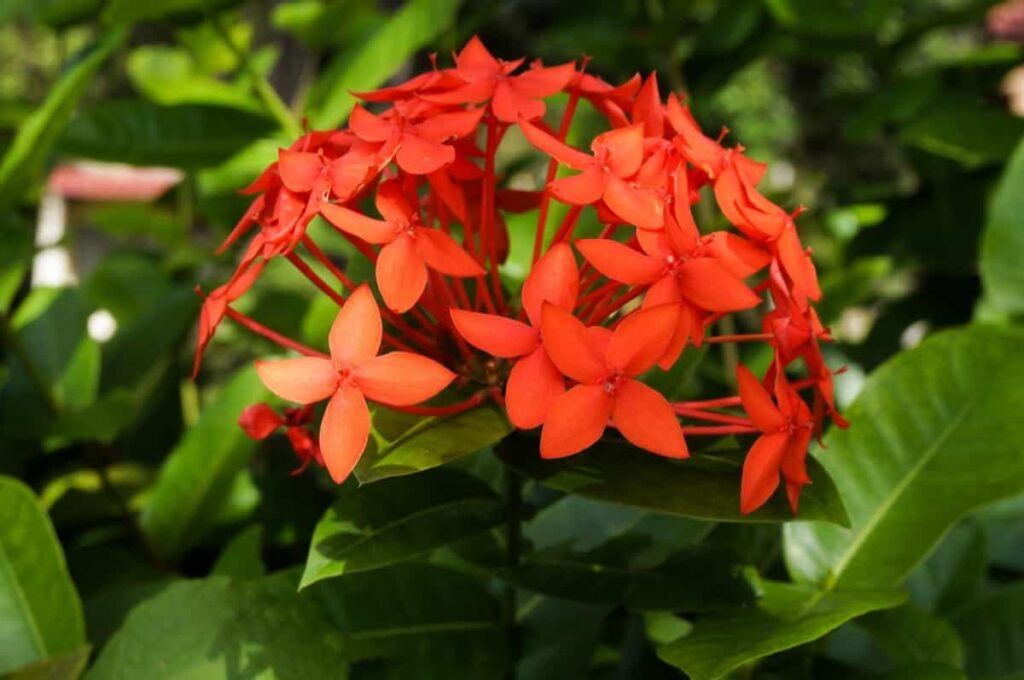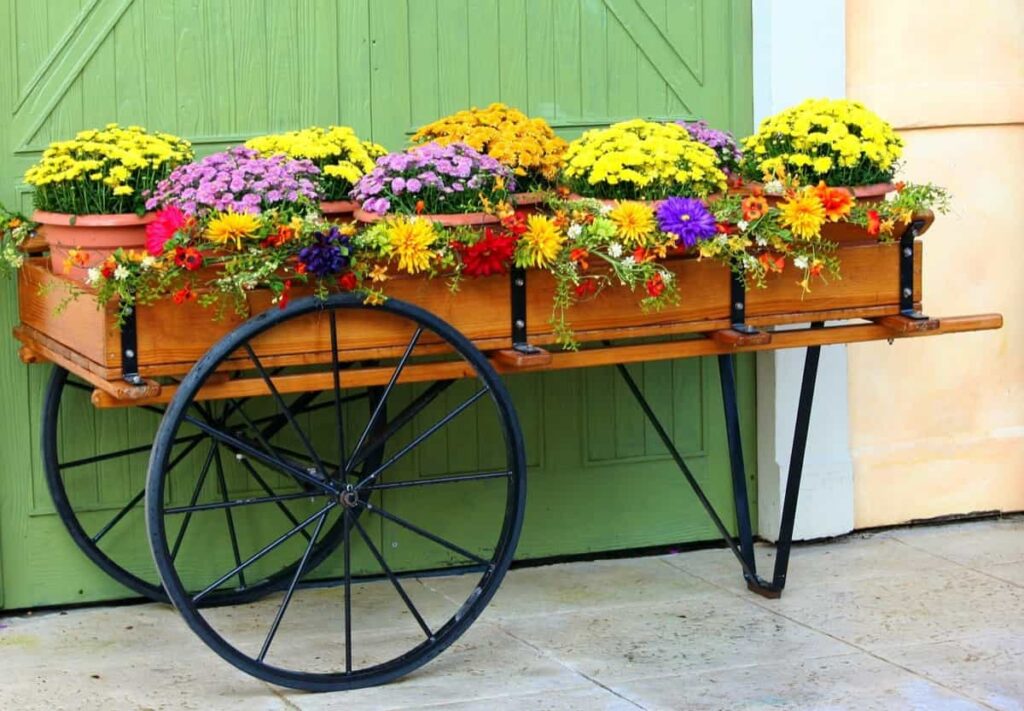Flowering plants are an excellent addition to any home or office. Flowering plants add color, fragrance, and beauty to our lives. The trick is to grow them successfully. Flowering plants require specific conditions to thrive. The ideal growing environment has enough light, water, nutrients, and airflow. Seedlings also require heat, moisture, and darkness. Flowering plants require little care and can thrive in almost any environment.

In addition to being attractive, they also provide essential benefits for our health. It’s easy to grow flowering plants, but you must know how to care for them properly. You should choose the right plant for your needs. After that, you should water the soil regularly and fertilize the plants when they start growing.
Finally, you have to prune the plants to keep them healthy. Flowering plants are easy, and you don’t need any special equipment. All you need is a pot, soil, fertilizer, and water. Flowers of different regions are recognized for their diversity and characteristics. India can grow many flowering plants due to its diverse climate and vast area. Indian flowers are not only beautiful, but they also have religious and cultural significance.
365 days flowering plants in India
Bougainvillaea
These small flowers can be easily seen in every garden. It grows comfortably in the Indian environment. These flowers grow as shrubs, vines, and even very small trees and come in over 18 species. Bougainvillea is an evergreen climber plant used as an ornamental in many gardens. Its bright colors can work wonders for any gloomy garden. The plant loves an open-air and warm, dry climate.
Bigroot Geranium
Bigroot Geranium needs less care and is a perennial that grows as an herbaceous ground cover. Bigroot Geranium can reach up to twelve inches in height, but it extends to about twenty-four inches on the outside. It has a beautiful ground cover and is weed-resistant. It thrives in normal soil, partial shade from the full sun, and drought during the summer.
Baby Sunrose
Sunrose has a slow-cultivating ground cover and is the most beautiful throughout the year. The leaves look beautiful due to their small and hefty shape, which adds to the beauty of the annual flowering shrub. Plants like to trim wire stems regularly, encouraging new growth, and they need full sun and moderate water for a more significant change. Baby Sunrose can be relatively easy to grow through cutting and rooting.
Rose
This plant has more than 300 species that can bloom throughout the year. Usually, Roses bloom from spring to autumn, but thanks to the tropical Indian climate, you can occasionally encourage their year-round blooms.
In case you missed it: How to Grow Rose Plants from Cuttings to Harvest: Planting Guide for Beginners

Lantana
Lantana comes in various colors, including yellow, orange, white, red, and purple. These colors can be combined to create a two-coloring effect that can only stand out to beautify the garden as a whole. They even prefer warmer climates, with well-drained soil and very little fertilizer.
Azalea
Azalea flowers look amazing and bloom beautifully throughout the year in India. This flower requires healthy soil for growth and does not make the ground wet or dry. Organic fertilizer prepared from kitchen waste is the most effective option to add fertilizer to the Azalea plant. Fertilizer makes the soil acidic and helps enhance this plant’s growth by bringing unique flowers.
Ixora
Ixora is the most common summer plant in any garden. The plants mostly come in red, yellow, and bright orange colors. Their growth and maintenance are also fairly simple, making them a favorite among many gardeners.
In case you missed it: Growing Ixora In Pots – Planting Guide

Hoya
Hoya is an evergreen plant. With routine care, it opens year-round in India. There are 200 varieties of this flower. Hoya leaf plant can be found in manufacturing perfumes, lotions, and other cosmetics. First, it requires at least 4 to 5 hours of sunlight daily. Then, every two weeks, add liquid fertilizer for the best results. The colors of Hoya are white, pink, and red. You can propagate it in 6 to 8-inch flower pots with dry soil.
Crepe Jasmine
Crepe Jasmine is a plant with a bushy appearance. Crepe jasmine can grow rapidly using cutting techniques. You can grow this plant along the two sides of the main door of your house, and it will add a beautiful appearance to your home. It is a robust plant that requires little care and can be grown. It requires enough sunlight to grow well tagar flowers throughout the season.
Ajuga
This leafy plant rapidly grows in empty spaces, smothering plants, and provides magnificent blooms and flowers. It is also helpful to prevent erosion. Ajuga is usually grown from blue to purple but can also be found in white. To keep this flower within the range, you should plant Ajuga flowers in a semi-sunny place. Ajuga is usually grown in shaded areas, but it will thrive in the sun, although more slowly, it becomes much easier to manage. The plant prefers moist soil but is surprisingly adaptable and can withstand slight drought.
Bleeding-heart
A Bleeding-heart needs warm, moist soil and requires less care once it starts to grow. A bright pink blossom with a heart-shaped shot is a beautiful addition to any area. Bleeding-heart needs water daily to keep the soil adequately moist. It thrives in a shaded or partially shaded location in organic soil.
Coneflower
Coneflowers are a popular perennial for good reasons. Coneflowers are drought and heat-resistant can be grown for months, and can make excellent cut flowers. They also attract birds and butterflies. Coneflowers are available in various colors, including red, pink, yellow, and chartreuse.
In case you missed it: Growing Morning Glory Flowers: How to Plant and Care

Marigold
Marigold is one of the common and easy-to-grow annuals. Due to its spiritual connotations, the Marigold is also a lucky flower for Indian gardens. It also requires simple growing and can grow rapidly in low-maintenance gardens. However, it requires a lot of sunlight and humus-rich soil.
Christ plant
The Christ plant is an evergreen, annual herbaceous shrub with dark green leaves. You can plant this flowering plant throughout the year. It thrives in direct sunlight and dry to moderate humidity, well-drained soil. This plant is identified by its sticky, fleshy paired bract flowers on gray stems with thick spines. The Christ plant thrives in bright light with dry soil and insufficient relative humidity.
Rangoon Creeper
The Madhumalti/ Rangoon Creeper flower plant is an ornamental plant in India that gives many flowers in the summer. It is an easy flowering plant in low maintenance that keeps blooming throughout the year. You can grow it along a fence or guide it around your main door, and its red flowers will make it beautiful and fill the surroundings with its sweet fragrance.
Gerbera Daisy
Gerbera flowers are abundant and have stunning petals. It can be planted in a backyard garden or placed on a balcony. Gerbera is the most beautiful perennial flowering plant in India. Gerbera Daisy flowering plants can be propagated using two methods cutting and seeding. This flower is expensive and is widely used for high-end decoration purposes.
In case you missed it: Growth Stages of Flowering Plants: Rose, Marigold, Hibiscus, Dahlia, Gerbera Daisy, and Jasmine

Rain Lily
Rain Lilies are perfect for people who need more blooms from the same plant without spending too much time on its care. It usually blooms after a good sprinkle of rain, and the flower clusters emerge from this low-growing plant. You can easily grow them in a wide pot.
Aparajita
Aparajita is one of those flowers that bloom throughout the year and is a show-stopper because of its shady appearance on petals. It’s a creeper that likes to get a fair share of sunlight and is easy enough to grow. Taking proper care of your Aparajita plant will reward you with its blue flowers throughout the year in India.
Jatropha
Jatropha is an Indian plant used to produce oil for centuries. Jatropha also produces many other valuable products, such as food, medicines, biofuels, fertilizers, animal food, and cosmetics. The beautiful red flowers are going to attract the butterfly.
Rajnigandha
Taking care of Rajnigandha plants is almost minimal. A flower stalk emerges with 5 to 6 buds, opening rapidly and dying back. Keep cutting its leaves to get more flower stalks and provide good fertilizer.
Chrysanthemum
The Chrysanthemum plant is one of the best-blooming plants in India, and it blooms many beautiful flowers. The plant propagates in 10 to 12-inch pots for flowers. The plant needs proper sunlight daily. When buds appear, apply liquid fertilizer every week. After every 15 to 20 days, add liquid fertilizer. From time to time, when there is no flower in the branch, cut it. This method will encourage multiple branches from the bottom of the plant, resulting in massive blooms of 30 to 40 flowers.
In case you missed it: How to Grow Chrysanthemums from Seed to Harvest: Planting and Care Guide for Beginners

Crossandra
Crossandra is a very popular crop cultivated in many parts of India. Most cultivation is done for commercial purposes; however, it can also be planted to add beauty to your garden. You can also use them as ornamental plants for many different occasions. It is often paired with jasmine to give a deep visual and fragrant effect.
Steps to grow flowering plants
Choose the best location
Before starting any gardening project, make sure you have enough space. You’ll need room for your plants to grow and plenty of sunlight and direct light. A sunny space and warm climate are suitable for growing flowers and vegetables. Understand the lighting needs of different types of plants and keep them according. Most flowering plants will need 6 to 8 hours of sunlight.
Prepare land or your containers
Prepare the land by digging weeds and removing rocks and debris before planting anything. Healthy soil will give you healthy plants. If you’re growing pot plants, you’ll need suitable soil that should be well-drained. The soil surface should be loose and aerated for the proper growth of roots. The soil should be prepared by mixing with compost, so that rich and fertile soil contains the nutrients necessary for the plant to grow well.
Start with seeds or seedlings
Starting plants with seeds is easy to grow the plants you need. Seeds can be sown in a seed tray for beginners in gardening. For advanced gardeners, seeds can also be planted in containers or plastic bottles. Seeds should be sown at the proper depth for germination. These seeds will sprout into baby plants with the right conditions, such as proper lighting, warm temperature, and water.
Initially, these baby plants can be lightly sprayed with water with the help of a spray bottle so that the plant is not damaged. They can be transplanted into a large container when they are about 3 to 4 inches tall.
Water requirement for growing flowering plants
After planting your seeds, water them regularly so they can grow into healthy plants. You should keep the soil moist but not wet. Moist soil is required for the germination process. Plants need rich, well-drained soil, whether in containers or on land. You can water your plants either early morning or late in the evening. This will promote better growth as watering with peak sun during the day will cause heat stress due to high temperatures.
Flowering plants care
Taking care of your plant will depend on what type of plants you are growing. Indoor plants will need indirect sunlight, while flowering plants and vegetable plants will need bright light and direct sunlight. A full sun spot will appreciate fragrant flowers and vegetables that require much sunlight.
Pruning for flowering plants
After your plants grow, it’s time to cut them. Remove all dead leaves and branches. This helps the plant stay strong and healthy and grow new green leaves. It is also essential to remodel your plants. Repotting can usually be done once a year when they grow into large plants or when the plants’ roots have overgrown their container.
Fertilizer requirement for growing flowering plants
Fertilizing your plants is essential for their growth. Use an organic fertilizer that contains both nitrogen and phosphorus. Jeevamrutha is a liquid fertilizer that is great for the welfare of your plants. These nutrients help your plants to grow bigger and stronger.
Conclusion
A well-planned garden or lawn contains several options, from plants producing vibrant color flowers to attract flies and butterflies to plants that produce juicy fruits or berries. However, the main focus of everyone is plants that bloom throughout the year. The garden looks more beautiful when filled with beautiful flowers and plants.
- Broccoli Seed Germination and Selection
- Asparagus Seed Germination and Variety Selection
- Seasonal Flower Gardening: Best Practices for Spring, Summer, Fall, and Winter
- How to Grow Hibiscus from Flower
- Plantation Ideas for Home Decoration: A Beginners Guide
- Flower Garden Designs and Layouts for Beginners
- Planting and Spacing Techniques in Papaya: A Beginner’s Guide
- Growing Gold: Essential Techniques for Planting Pineapples
- How to Make Kalanchoe Plant Bushy: Home Remedies and Solutions
- 11 Reasons Why Your Gardenia is Not Blooming: Home Remedies and Solutions
- Eco Elegance: The Guide to Designing a Drought-Tolerant Landscape
- Gardening on a Slope: Strategies for Hillside Landscaping
- Nourish and Flourish: Top Organic Mulches for Thriving House Plants
- Everything You Want to Know about Indian Mogra Flower: Discover Uses and Growing
- Green Thumb Success: Expert Tips for Cultivating Greenhouse Pumpkins All Year Round
- Maximize Growth & Flavor: The Ultimate Guide to Companion Planting in Herb Gardens
- How to Control Rhododendron Problems Naturally: Home Remedies and Organic Ways to Fix Them
- Natural Magic: The Remarkable Benefits of Cinnamon for Plants
- Best Steps to Revive Dying Tulip with Natural and Organic Treatment
- 10 Reasons Why Your Angel Trumpet is Not Blooming: Remedies and Treatment
- How to Fix Periwinkle Leaf and Flower-Related Problems: Natural Remedies and Solutions
- How to Fix Zinnias Leaf and Flower Problems: Discover Natural and Home Remedies
- Organic Steps to Induce Lemon Tree Flowers: A Comprehensive Guide
- Bloom Booster: Crafting the Perfect Homemade Bougainvillea Fertilizer
- Optimizing Growth: A Guide to Applying NPK Fertilizer for Potted Plants
- 10 Best Homemade Fertilizers for Rubber Plant: DIY Recipes and Application Method
- How to Boost Female Pumpkin Flowers: Effective Steps for More Flowers and High Yields
- Transform Your Indoor Garden: Top Benefits of Pink Salt for Houseplants
- 10 Best Homemade Fertilizers for Peacock Plants (Calathea): Easy DIY Guide
- Unlock Blooms: 9 Reasons Why Your Potted Chrysanthemum is Not Blooming
- 8 Reasons Why Your Potted Hibiscus is Not Blooming: Fix it with Simple Solutions
- Unlock Blooms: 9 Key Reasons Your Potted Frangipani Won’t Flower
- 10 Reasons Why Is My Ice Plant Not Blooming: Remedies and Treatment
- 10 Reasons Why My Potted Hydrangea Not Blooming: Treatment and Remedies
- 10 Reasons Why is My Wisteria Not Blooming: Remedies and Treatment
- 10 Reasons Why is My Goldfish Plant Not Blooming: Remedies and Treatment